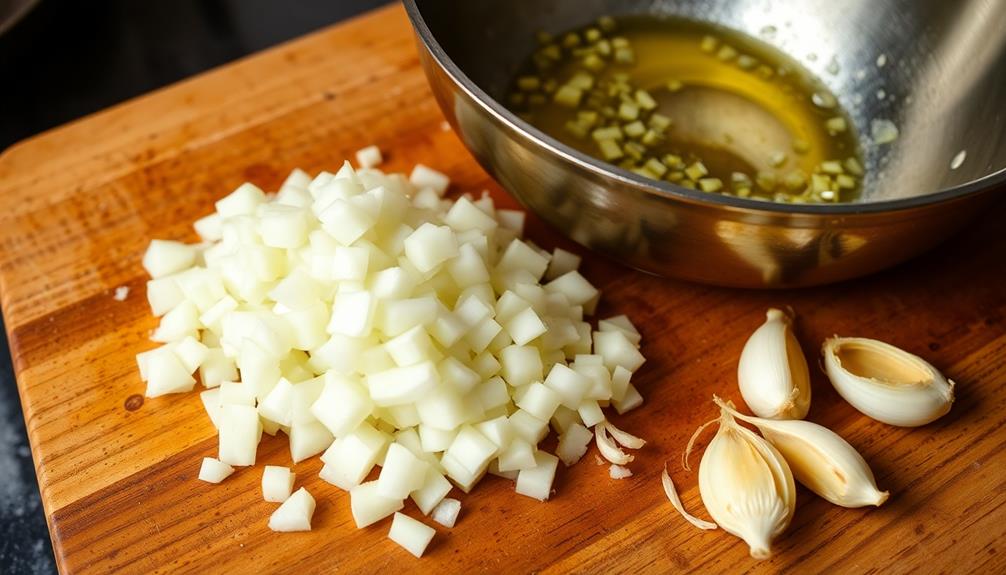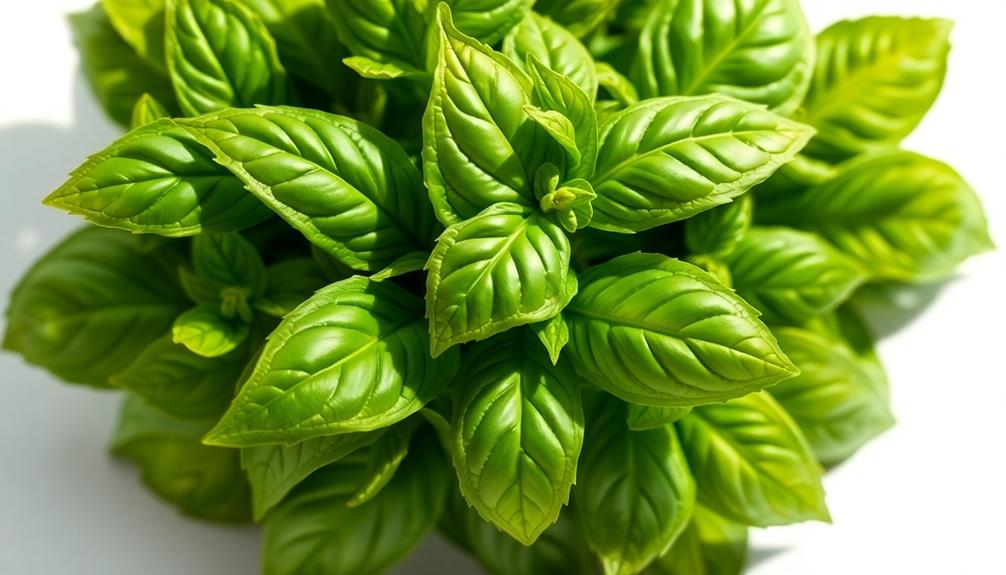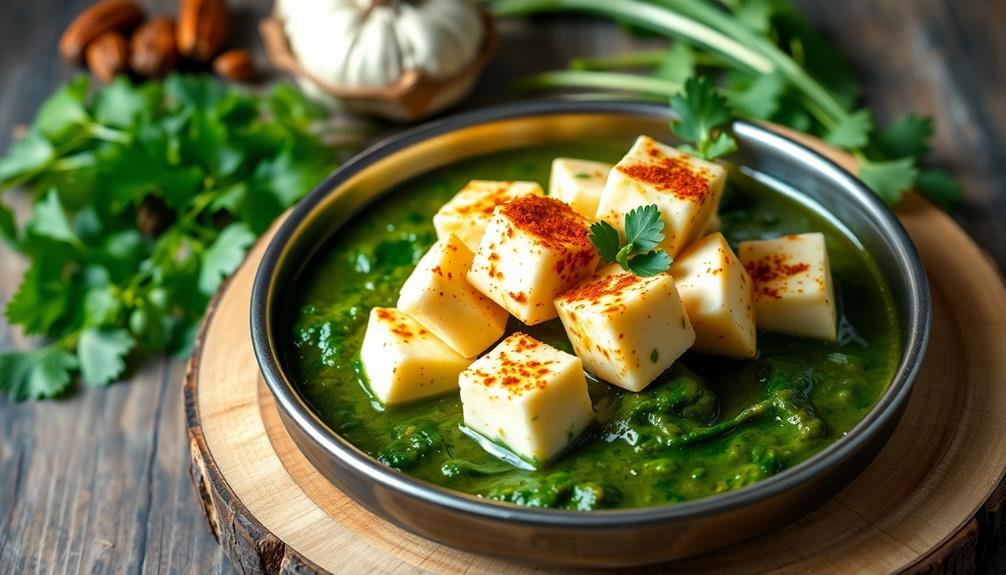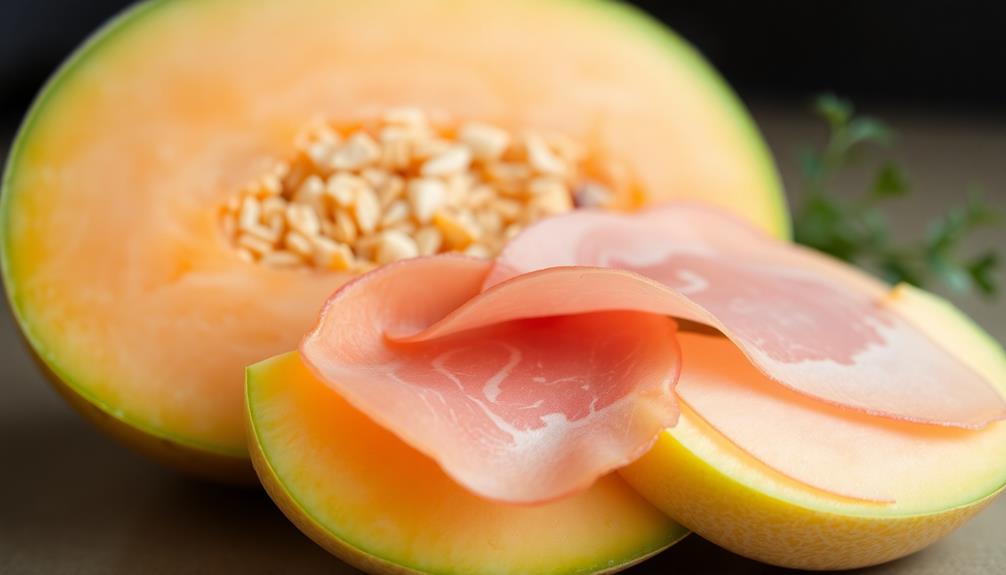Pasta with tomato sauce is a timeless classic that brings families together! This beloved Italian dish has origins dating back to the 16th century, when tomatoes were first introduced to Europe. Today, you can find unique regional variations across Italy, from rustic southern sauces to complex northern styles. To make it, you'll simmer onions, garlic, and crushed tomatoes until thick and flavorful. Toss the sauce with your favorite pasta, then top with fragrant basil and nutty Parmesan for the perfect bite. It's a comforting, customizable meal that's sure to become a new family favorite. And if you keep reading, you'll discover even more about this classic dish. Looking for a delicious twist on the classic pasta with tomato sauce? Try experimenting with a spaghetti carbonara recipe. This creamy dish hailing from Rome features pancetta, eggs, and plenty of cheese for a decadent and satisfying meal. With so many variations to explore, it’s no wonder pasta with tomato sauce remains a beloved staple in homes and restaurants around the world.
Key Takeaways
- Pasta with tomato sauce is a classic Italian dish with origins dating back to the 16th century when tomatoes were introduced to Europe.
- Regional variations of tomato sauce have developed across Italy, ranging from rustic southern styles to more complex northern varieties.
- The dish is versatile, allowing for customization based on personal taste preferences, and emphasizes the quality of ingredients.
- Proper cooking techniques, such as simmering the sauce and achieving al dente pasta, are crucial for the dish's overall success.
- Pasta with tomato sauce is often enjoyed in shared settings, creating opportunities for bonding and fostering a sense of community and togetherness.
History
The origins of pasta with tomato sauce can be traced back to the 16th century, when tomatoes were first introduced to Europe from the Americas.
These juicy, colorful fruits quickly became a staple ingredient in Italian cuisine, and enterprising cooks started experimenting with pairing them with the popular pasta dishes of the time.
Over the centuries, this classic combination evolved, with different regions of Italy developing their own unique styles of tomato sauce.
From the simple, rustic sauces of the south to the more complex, seasoned varieties of the north, each version celebrates the natural sweetness and acidity of the tomato, perfectly complementing the hearty texture of the pasta.
Today, pasta with tomato sauce, or "pasta al pomodoro," remains a beloved dish, enjoyed by families around the world.
Whether served as a cozy weeknight meal or a centerpiece of a lively celebration, this timeless recipe continues to bring people together, one delicious bite at a time.
Recipe
Pasta with Tomato Sauce
Recipe
Pasta is a beloved staple in many households, and one of the most classic and comforting dishes is pasta with tomato sauce. This simple yet delicious meal is easy to prepare and can be customized to suit your taste preferences. Whether you're a seasoned home cook or a newbie in the kitchen, this recipe will guide you through the steps to create a delectable pasta dish that will impress your friends and family.
Tomato sauce is the foundation of this recipe, and the key to achieving the perfect flavor lies in the quality of the ingredients and the care taken during the cooking process. By simmering the sauce gently and allowing the flavors to meld, you'll end up with a rich, flavorful topping that complements the pasta perfectly.
Ingredients:
- 1 lb (500g) of your favorite pasta (e.g., spaghetti, penne, or rigatoni)
- 1 tablespoon olive oil
- 1 onion, diced
- 3 cloves of garlic, minced
- 1 (28 oz/800g) can of crushed tomatoes
- 1 teaspoon dried oregano
- 1/2 teaspoon dried basil
- Salt and pepper to taste
- Grated Parmesan cheese (optional)
Instructions:
In a large pot, bring salted water to a boil. Add the pasta and cook according to the package instructions until al dente. Drain the pasta and set it aside.
In a saucepan, heat the olive oil over medium heat. Add the diced onion and sauté until translucent, about 5 minutes. Stir in the minced garlic and cook for 1 minute, until fragrant.
Pour in the can of crushed tomatoes and add the dried oregano and basil. Season with salt and pepper to taste. Simmer the sauce for 15-20 minutes, stirring occasionally, until it has thickened.
Toss the cooked pasta with the tomato sauce, ensuring the pasta is evenly coated. Serve hot, topped with grated Parmesan cheese if desired.
For best results, use high-quality canned crushed tomatoes and fresh herbs if available. The longer the sauce simmers, the more the flavors will develop, so feel free to let it simmer for a bit longer if time permits. Enjoy your homemade pasta with tomato sauce!
Cooking Steps
Dice the onions and sauté them in olive oil until they're soft.
Next, add the crushed garlic and let it cook for a minute.
Then, toss in the chopped tomatoes and let the mixture simmer until the tomatoes break down into a delicious sauce.
Step 1. Dice Onions, Sauté in Olive Oil

Dicing the onions and sautéing them in olive oil is the next crucial step in this recipe. Don't be intimidated – it's easy!
First, grab a sharp knife and a sturdy cutting board. Carefully slice the onion in half from root to stem, then thinly slice each half. Next, stack the slices and cut them crosswise into small, evenly-sized pieces. This is called dicing.
Now, let's get cooking! Heat a couple tablespoons of olive oil in a pan over medium heat. Once the oil is shimmering, add the diced onions.
Sauté the onions, stirring occasionally, until they're soft and translucent, about 5-7 minutes. Be sure to keep an eye on them so they don't burn. The onions should have a lovely golden color when they're ready.
Sautéing the onions brings out their natural sweetness and infuses the oil with their savory flavor – it's an essential foundation for the tomato sauce.
Get ready, because the aroma is about to fill your kitchen!
Step 2. Add Crushed Garlic

With the aromatic onions sizzling away, it's time to add the next layer of flavor – crushed garlic.
Grab a couple of fresh garlic cloves and give them a good smash with the flat side of your knife. This'll release the garlic's tasty oils and get that mouthwatering aroma going.
Toss the crushed garlic into the pan with the onions and let it sizzle for a minute or two. Stir it around so the garlic doesn't burn – you just want it to get nice and fragrant.
The garlic will add a lovely savory depth to your tomato sauce, making every bite even more delicious. Remember, a little garlic goes a long way, so don't overdo it. Just a couple of cloves should do the trick!
Once the garlic's had a chance to work its magic, you're ready to move on to the next step. Get ready for some tomatoey goodness!
Step 3. Add Chopped Tomatoes

Next, grab a can of diced tomatoes or some fresh, ripe tomatoes and give them a rough chop. You want those juicy tomatoes to be in bite-sized pieces, ready to soak up all the flavors. Toss the chopped tomatoes into the sizzling garlic. Mmm, can you already smell that mouthwatering aroma?
Now, let's give those tomatoes a minute or two to cook down. As they simmer, they'll release their natural sweetness, creating a rich, velvety sauce. Stir the mixture occasionally, ensuring the garlic doesn't burn. You want everything to meld together into a harmonious blend of flavors.
Once the tomatoes have softened and the sauce has thickened slightly, it's time to adjust the seasoning. Give it a taste and add a pinch of salt and pepper to balance the flavors.
Step 4. Simmer Until Tomatoes Break Down

After tossing the chopped tomatoes into the sizzling garlic, let them simmer for a minute or two.
You'll see the tomatoes start to break down and release their juices, creating a lovely, rich sauce. Stir the mixture occasionally to ensure even cooking.
As the tomatoes soften, you can use the back of a wooden spoon to gently mash them against the side of the pan. This will help thicken the sauce and release even more of their natural sweetness.
Breathe in the heavenly aroma of the simmering sauce – it's sure to get your taste buds tingling!
Keep an eye on the pan, and when the tomatoes have completely broken down and the sauce has thickened to your desired consistency, it's time to move on to the next step.
Buon appetito!
Step 5. Add Fresh Basil Leaves

Towards the end of simmering, tear or chop the fresh basil leaves and stir them into the thickened tomato sauce. The fragrant, green leaves will instantly infuse the dish with an aromatic, herbal essence.
As the basil wilts and combines with the rich tomato flavor, it creates a mouthwatering, authentic Italian taste.
Be sure to tear or chop the basil just before adding it to the sauce. This will help the essential oils release, heightening the fresh, peppery notes.
Gently fold the basil into the sauce, allowing it to wilt and blend seamlessly. The vibrant green flecks will beautifully contrast the deep red of the tomatoes, making for a visually stunning presentation.
The final touch of fresh basil ties all the flavors together, elevating the simple tomato sauce into a truly memorable pasta dish. Your family is sure to savor every bite, transported to the Italian countryside with each flavorful forkful.
Final Thoughts
Pasta with tomato sauce is a classic dish that never fails to satisfy. Whether you're whipping it up for a family dinner or hosting a lively gathering, this beloved recipe is sure to bring smiles all around.
The final touches are what really make it shine. Don't forget to sprinkle on some fresh basil leaves – their vibrant green hues and aromatic flavor will transport you straight to an Italian trattoria.
And let's not overlook the importance of a sprinkle of Parmesan cheese. Its salty, nutty notes complement the rich tomato sauce perfectly.
As you twirl your fork through the perfectly al dente pasta, savor each delicious bite. This comforting, crowd-pleasing dish is a true celebration of simple, quality ingredients.
Enjoy it with your loved ones, and create memories that will last long after the last morsel is devoured.
Frequently Asked Questions
What Type of Pasta Is Best for Pasta Al Pomodoro?
For a classic pasta al pomodoro, you'll want to choose a short, sturdy pasta shape like penne, rigatoni, or fusilli. These will hold the tomato sauce well and provide a satisfying texture in every bite.
Can I Use Canned Tomatoes Instead of Fresh?
Sure, you can use canned tomatoes instead of fresh for your dish. Canned tomatoes are a convenient and versatile option that can provide the same great flavor as fresh. Just be sure to choose high-quality canned tomatoes for the best results.
How Do I Prevent the Sauce From Becoming Too Watery?
To prevent your sauce from becoming too watery, you can try simmering it for longer, using less liquid, or adding a thickener like tomato paste or cornstarch. This will help achieve the desired consistency.
Can I Add Other Vegetables to the Dish?
Absolutely! You can definitely add other vegetables to your dish. Sautéed onions, bell peppers, zucchini, or mushrooms would all make tasty additions, adding more flavor and texture to your meal.
How Do I Reheat Leftover Pasta Al Pomodoro?
To reheat your leftover pasta, you can simply place it in a pan with a splash of water or sauce, cover, and heat over medium until warmed through. Stir occasionally to prevent sticking.










